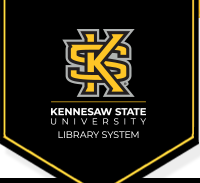Semester of Gradation
Fall 2025
Degree Type
Dissertation/Thesis
Degree Name
Data Science and Analytics
Department
School of Data Science and Analytics
Committee Chair/First Advisor
Dr. Ramazan Aygun
Second Advisor
Dr. Mahmut Karakaya
Third Advisor
Dr. Sherry Ni
Abstract
Traditional object recognition pipelines often show substantial performance degradation when operating on low to medium resolution imagery, particularly when the target objects are small and take random irregular shapes. Likewise, common small object detection models suffer in detecting objects that are not more than a few pixels in extent. This is primarily due to the limited spatial context available for feature extraction, compounded by the loss of discriminative information at lower resolutions.
This research has focused on two primary objectives. (1) region-based object recognition for local explanations produced by explainability techniques used in image classification. (2) very small object detection using a lightweight and efficient approach. The key contributions are provided as follows. (I) A novel method for explainability auditing using LIME and superpixel classification; (II) A regression-free detection pipeline that identifies 8×8 pixel objects by upscaling unsupervised region proposals via SRGAN and applying cascade classification; (III) Novel fully convolutional object recognition networks: U-Net for Region Proposal Network (URPNet), to extract 16×16 regions of interest, and Region-Based Fully Convolutional Detection Network (RFCDet), a FCOS-inspired detection model enhanced with optional multi-head attention, and a novel IoU loss with convex penalty for tiled detection; and (IV) An integrated lightweight inference framework combining URPNet and RFCDet with a dedicated postprocessing pipeline for very small object detection. Experimental evaluation on a dataset of small objects derived from the AI-TOD v2 dataset demonstrates that our approach achieves improved performance in average precision and recall, outperforming the state-of-the-art models, in detecting very small and rare objects.
Signed Defense form

